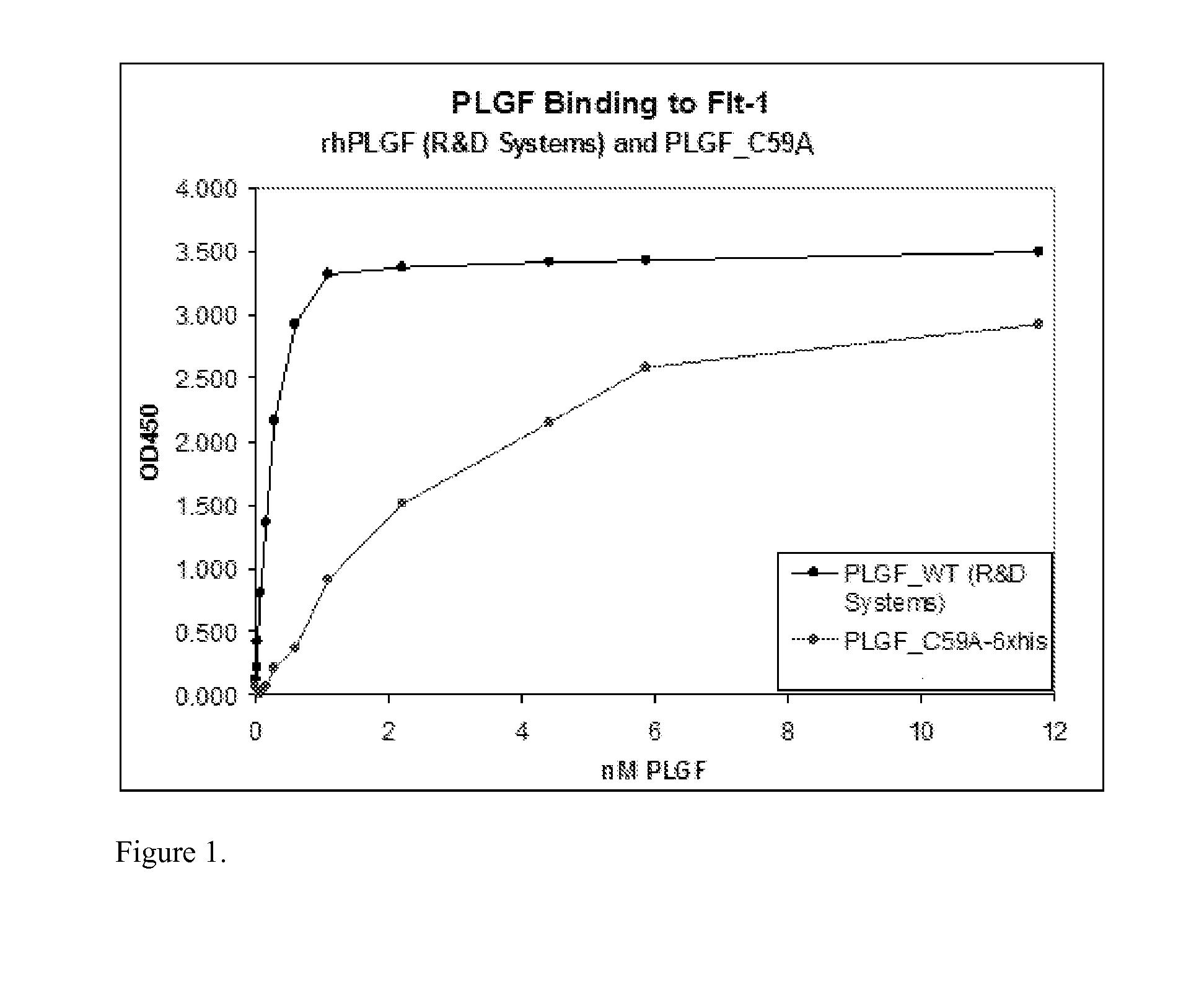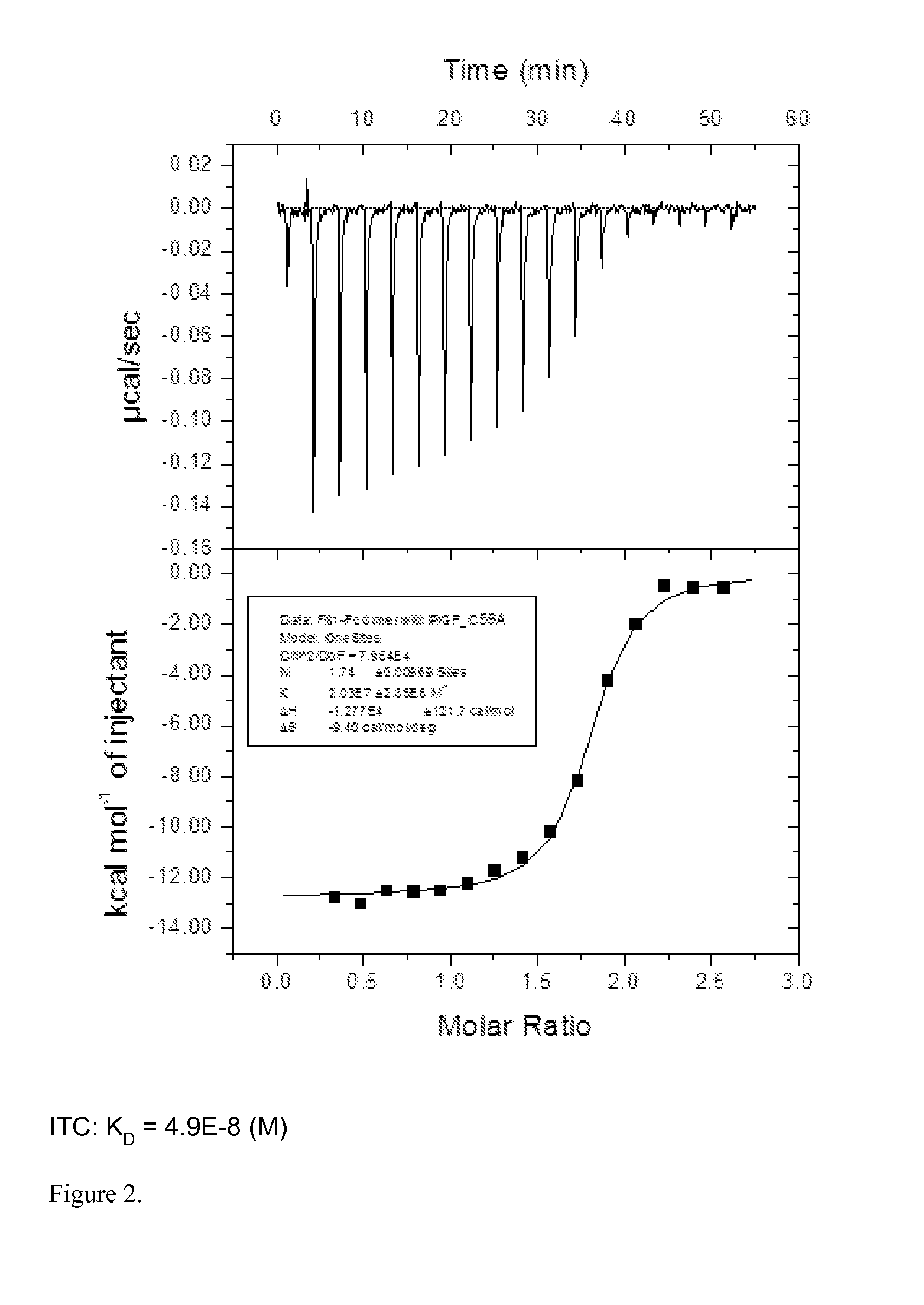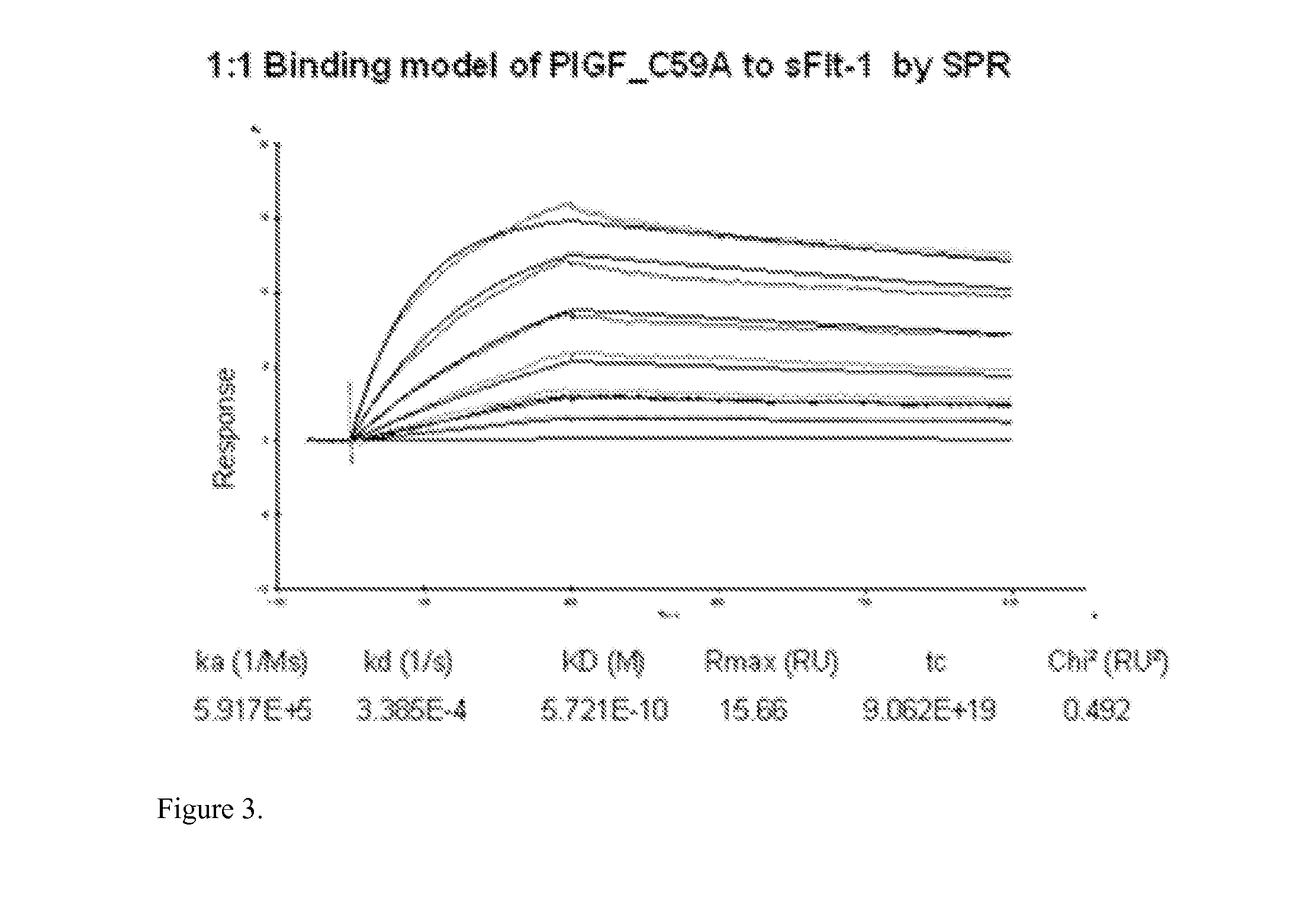Placenta growth factor in treating duchenne muscular dystrophy
a growth factor and duchenne muscular dystrophy technology, applied in the direction of angiogenin, peptide/protein ingredients, drug compositions, etc., can solve the problems of muscle degeneration and eventual death, abnormal sarcolemnal membrane function, no known cure for dmd, etc., to improve dmd symptoms and/or the effect of increasing the amount of veg
- Summary
- Abstract
- Description
- Claims
- Application Information
AI Technical Summary
Benefits of technology
Problems solved by technology
Method used
Image
Examples
example 1
Production of PLGF Single-Chain Mutants
[0177]A sequence spanning the 3′-5′ nucleotides of the first PLGF gene (starting with the recognition sequence for the restriction endonuclease NgoMIV and excluding the stop codon), a 42 nucleotide linker (encoding SEQ ID NO: 14) and the second PLGF gene and a PmeI restriction site were synthesized in vitro. The amino acid sequence was back translated into a nucleotide sequence using the codon usage for highly expressed human genes. Further adaptations of the codon usage were made in order to prevent high GC content as well as direct or inverted sequence repeats within the 3′ PLGF sequence as well as with the 5′ PLGF sequence. The 5′ PLGF gene was cut with NheI and NgoMIV and inserted together with the linker-3′ PLGF sequence (NgoMIV, PmeI) into the expression vector pX671. Mutations in the 3′ PLGF coding sequence were introduced using the QUICKCHANGE mutagenesis kit from AGILENT and resulting fragment was inserted into the expression vector as...
example 2
Production of PLGF C59A Mutant
[0181]The 236 C-terminal nucleotides of the PLGF gene excluding the stop codon were amplified by PCR. The forward amplification primer spanned the PciI restriction site at nucleotide 212 of the coding sequence and contained a TG to GC mutation at nucleotide 229 and 230 of the coding sequence (introducing the C59 to A mutation in the PLGF C59A protein). The reverse amplification primer added a Tev protease cleavage site and a 6 Histidine tag as well as a PmeI restriction site to the 3′ end of the PLGF coding sequence. The PCR fragment was inserted together with the 5′ end of the wt PLGF cut with NheI and PciI into the NheI and PmeI restrictions site of the pX671 expression vector.
[0182]PLGF C59A was expressed in human fibrosarcoma cells. Fibrosarcoma cells were stably transfected with an expression plasmid for PLGF C59A. A single stable clone was established and media production was initiated using a GE Wave Bioreactor. PLGF C59A expressing cells were gr...
example 3
Wild-Type and Mutant PLGF Binding Assays
[0184]Plate Based Assays
[0185]A plate based assay was performed to examine the binding of mutant PLGF protein to Flt-1. Briefly, plates were coated with a mouse monoclonal anti-Flt-1 antibody for capture. After washing and blocking steps, 250 ng / ml of Flt-1 receptor was incubated with WT PLGF (0-400,000 pg / ml) or PLGF C59A (0-40,000 pg / ml) in the plate. After further washing steps, bound WT or mutant PLGF were detected using a biotinylated goat anti-PLGF antibody and streptavidin-HRP immunodetection system. PLGF C59A appeared to bind Flt-1 with lower affinity than WT PLGF. (FIG. 1).
[0186]Inhibition of binding of VEGF to sFlt-1 by WT PLGF and PLGFC59A was also assessed by ELISA. The addition of recombinant human sFlt-1 inhibited binding of recombinant VEGF to recombinant human sFlt-1 chimera (FIG. 6). Binding of human sFlt-1 Fc to immobilized human VEGF was quantified by immunodetection with HRP conjugated anti-human IgG Fc. Data were normalize...
PUM
| Property | Measurement | Unit |
|---|---|---|
| Fraction | aaaaa | aaaaa |
| Fraction | aaaaa | aaaaa |
| Flexibility | aaaaa | aaaaa |
Abstract
Description
Claims
Application Information
 Login to View More
Login to View More - R&D
- Intellectual Property
- Life Sciences
- Materials
- Tech Scout
- Unparalleled Data Quality
- Higher Quality Content
- 60% Fewer Hallucinations
Browse by: Latest US Patents, China's latest patents, Technical Efficacy Thesaurus, Application Domain, Technology Topic, Popular Technical Reports.
© 2025 PatSnap. All rights reserved.Legal|Privacy policy|Modern Slavery Act Transparency Statement|Sitemap|About US| Contact US: help@patsnap.com



